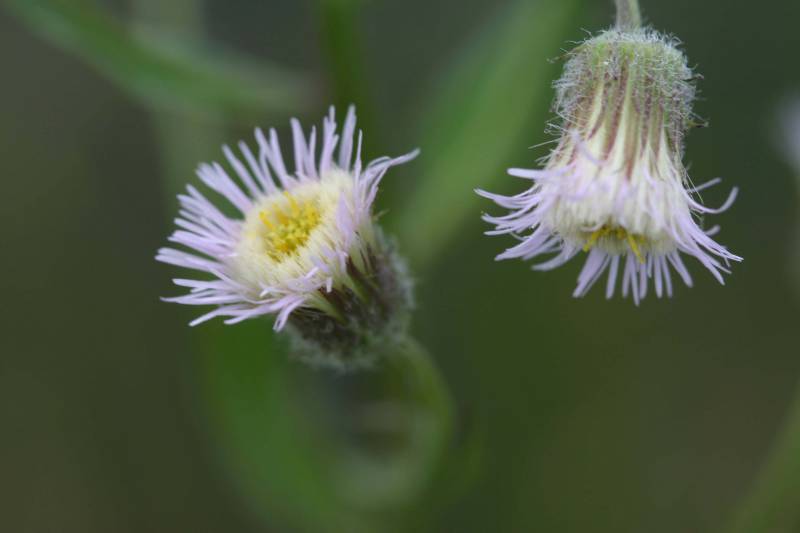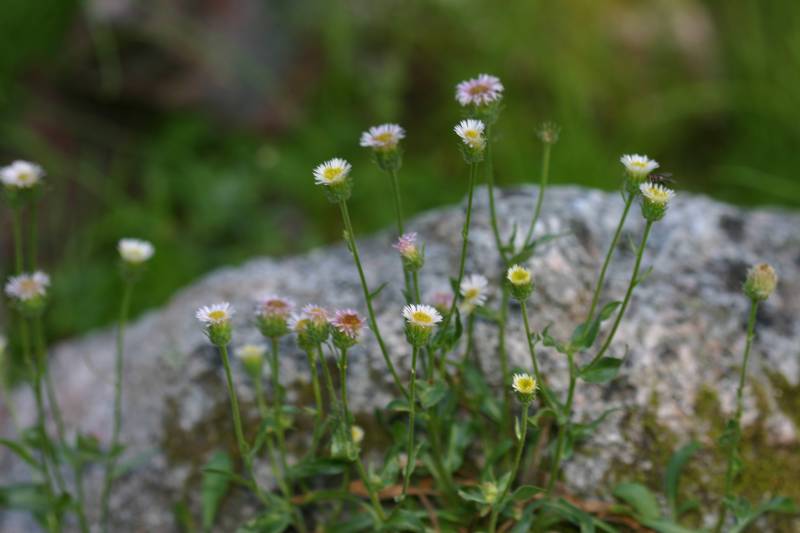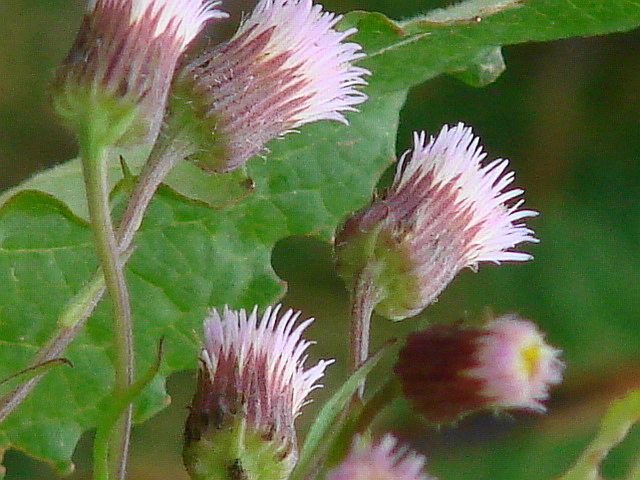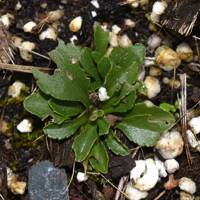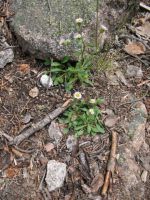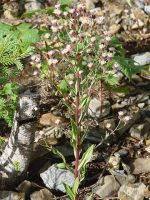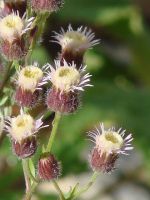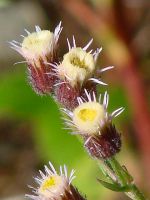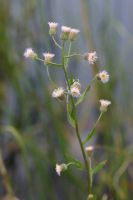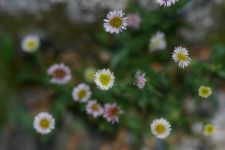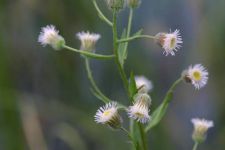Distribution: Occurring east of the Cascades crest in northern Washington; Alaska to California, east to the Rocky Mountains, northern Great Plains, Great Lakes region, and eastern Canada.
Habitat: Streambanks, bogs, ponds, wet meadows, ditches, gravelly places along roads at middle to high elevations.
Flowers: July-August
Origin: Native
Growth Duration: Biennial, Perennial
Conservation Status: Not of concern
Pollination: Bees, butterflies, flies, apomixis?
Weak-rooted biennial or short-lived perennial, erect, 2-60 cm. tall, the stem covered with spreading, short, stiff, blunt hairs.
Basal leaves oblanceolate, up to 15 cm. long and 12 mm. wide; cauline leaves linear, often elongate.
Peduncles erect, the lower heads surpassed by the subtending leaves, or the heads solitary; involucre 4-9 mm. high, hairy but not glandular, its bracts imbricate, pointed and purple-tipped; pistillate flowers numerous, with erect, inconspicuous white rays 2-3 mm. long and 0.25-0.5 mm. wide; disk corollas 3.5-5 mm. long, shorter than the 20-30 pappus bristles.
Publication: Fl. Bor.-Amer. 2: 18. 1834.
Trimorpha lonchophylla (Hook.) G.L. Nesom
PNW Herbaria: Specimen records of Erigeron lonchophyllus in the Consortium of Pacific Northwest Herbaria database
WA Flora Checklist: Erigeron lonchophyllus checklist entry
OregonFlora: Erigeron lonchophyllus information
E-Flora BC: Erigeron lonchophyllus atlas page
CalPhotos: Erigeron lonchophyllus photos

